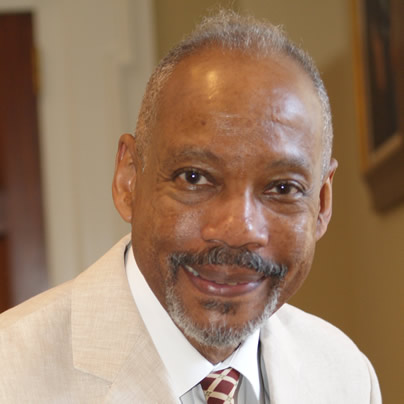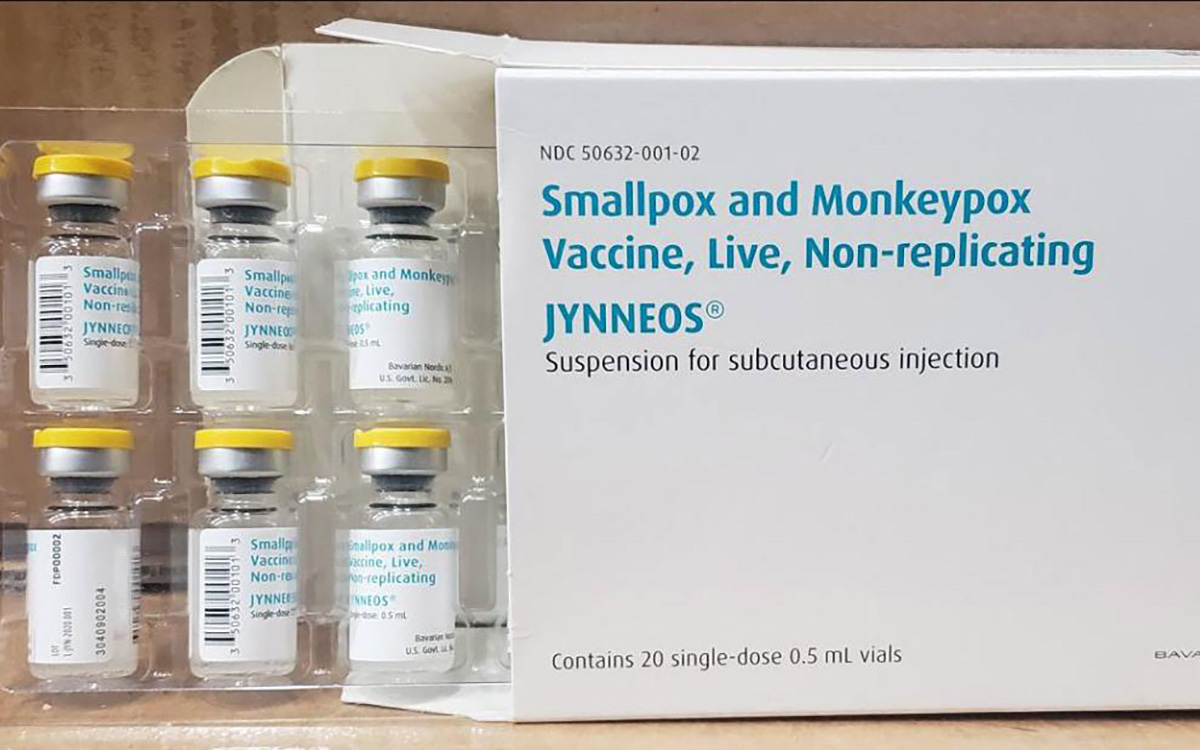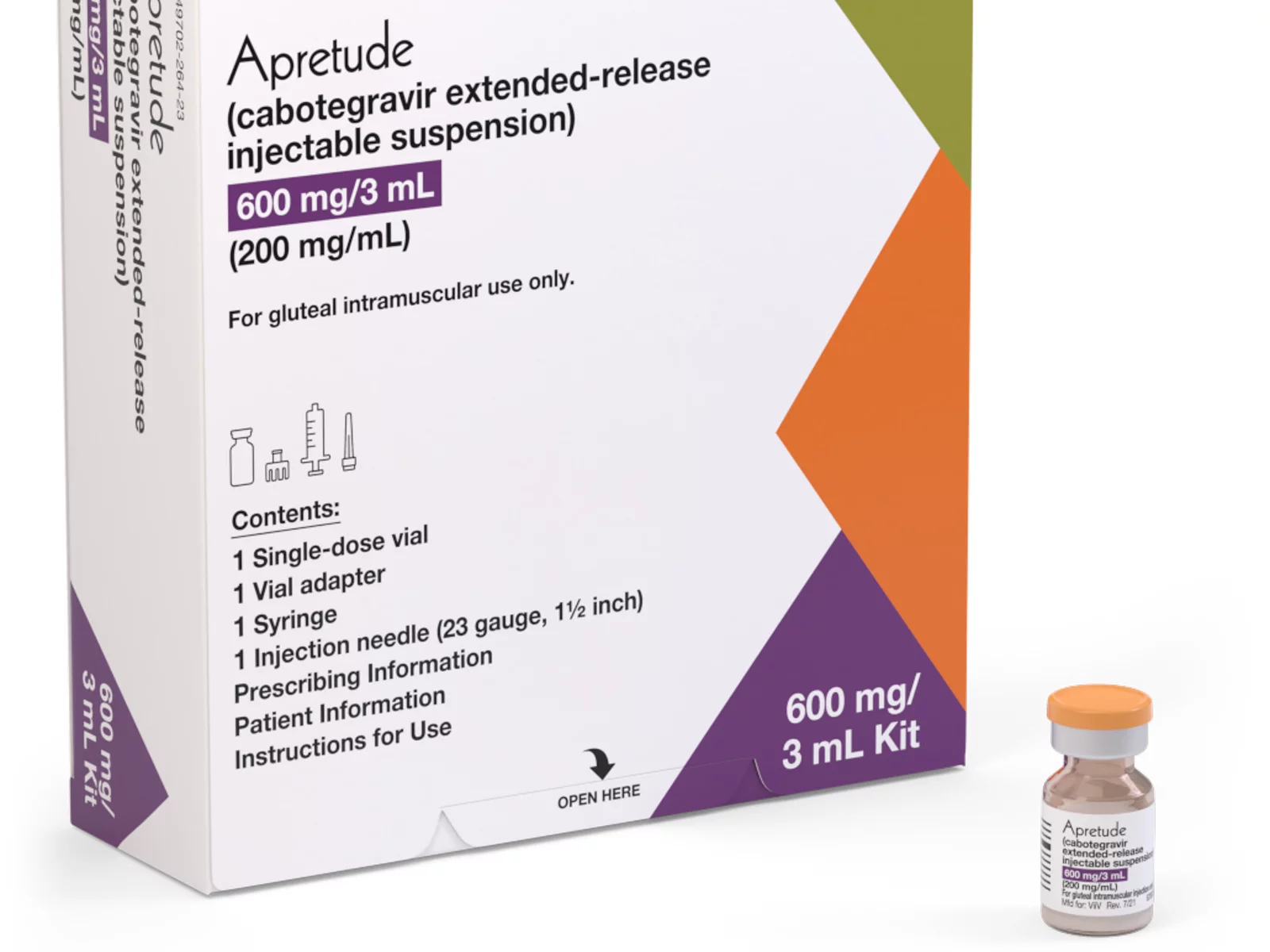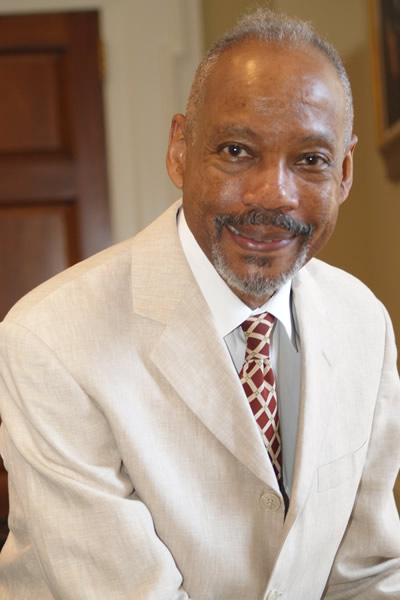Health
NAPWA prepares for National Gay Men’s HIV/AIDS Awareness Day
Frank Oldham stressed it remains important to honor those lost to the epidemic

The head of the National Association of People with AIDS stressed that he feels it remains important to honor those who have lost their battle with the virus.
“We deserve to have our own day because we have to commemorate,” said Frank Oldham, Jr., as he discussed National Gay Men’s HIV/AIDS Awareness Day that will take place on Sept. 27. “For me, AIDS has always been the Holocaust for gay men, gay men of color. It doesn’t matter. This for our community is the worst thing that happened to us, so I’m very proud that we have National Gay Men’s HIV/AIDS Awareness Day.”
NAPWA will mark National Gay Men’s HIV/AIDS Awareness Day, which it first organized in 2008, with a day-long conference at the Barbara Jordan Conference Center at the Henry J. Kaiser Family Foundation in downtown Washington on Sept. 28. It will feature panels on gay men and HIV/AIDS policy, the impact that the 2010 health care reform law that President Obama signed has had on those with the virus, dating among those who are positive and other topics. D.C. Mayor Vincent Gray is also scheduled to hold a press conference with NAPWA outside the Wilson Building to commemorate National Gay Men’s HIV/AIDS Awareness Day.
Oldham noted that NAPWA has also invited Human Rights Campaign staffers, gay doctors with HIV and other HIV/AIDS service providers to participate in the conference. He said his organization has also invited California Congresswomen Barbara Lee and Maxine Waters, Texas Congresswoman Sheila Jackson Lee, gay U.S. Reps. David Cicilline (D-R.I.) and Barney Frank (D-Mass.) and Dr. Gregory Pappas of the D.C. Department of Health’s HIV/AIDS, Hepatitis, Sexually Transmitted Disease and Tuberculosis Administration to take part.
HIV/AIDS activists and others will also release balloons in Dupont Circle to commemorate those who were lost to the virus on the day itself.
“This day is important because of our history,” said Oldham, who lived in New York City’s Chelsea and Greenwich Village neighborhoods during the height of the HIV/AIDS epidemic in the 1980s. “It’s as important as Stonewall because it’s a mark on our history.”
The Centers for Disease Control and Prevention estimates that 1.2 million Americans were living with HIV at the end of 2008 — and 20 percent of them were unaware of their status. The CDC further estimates that men who have sex with men accounted for 49 percent of people with the virus in the United States during this same period. White and black MSM were the groups with the highest rate of new infections in 2009.
The CDC further noted that the epidemic has killed nearly 594,000 Americans since it reported the first cases of what became known as AIDS in 1981.
Oldham, who tested positive for the HIV virus 23 years ago, said that homophobia, racism and socio-economic status within communities of color remain barriers in preventing the spread of HIV and treating those with the virus.
“That’s a huge barrier, especially for people who are poor and disenfranchised,” he said. “Today we have an opportunity as gay men to talk about homophobia as a barrier, being open, being out and saying to people get tested, know your status. But also we have an opportunity to prevent new infections and we need to be part of the solution.”
Oldham also defended his comments to the Washington Blade ahead of last year’s National Gay Men’s HIV/AIDS Awareness Day where he described bathhouses, circuit parties and other gatherings as part of a “beautiful, gay male culture.”
“The bathhouses, the circuit parties, the cafes, the gayborhoods we call home are all part of that culture as well as marriage — the right to get married,” he said. “For two gay men who want to get married, who want to adopt kids, who want to raise a family like that, that’s all part of it. The beautiful thing about gay male culture is that it represents so many different kinds of people.”
Oldham, who lead the city’s response to HIV/AIDS under then-Mayor Sharon Pratt Kelly in the early 1990s, further applauded D.C.’s response to the epidemic. He specifically praised the nation’s capital’s treatment-on-demand that connects people with HIV to care and the city’s needle exchange program that has prompted a 72 percent decrease in new infections among intravenous drug between 2007 and 2010.
“We have a city that I think for PWAs [people with AIDS] is one of the best places that you can possibly live—there’s care, there’s compassion. Of course there’s going to be AIDS stigma and homophobia in some places, but having a mayor that takes the leadership in preventing that and is outspoken about that makes a big difference,” said Oldham, who stressed he would like to see D.C. secure additional federal funding to further sustain these programs. “The District has become what I wanted it to become when I was here, the national model for how you deal with AIDS in a major city. And it is to be commended for it.”
Oldham also praised the national HIV/AIDS strategy that the Obama administration announced in 2010.
“HIV for all the tragedy that it has brought, has really forced us to have the opportunity to advance our social justice issues,” he said, noting it specifically calls for the reduction of homophobia and anti-AIDS stigma through culturally competent prevention and treatment programs. “By implementing the national AIDS strategy, you have to enforce the rights of people living with HIV/AIDS so when they get tested, they don’t go to jail. It begins to enforce things like that.”
Monkeypox
US contributes more than $90 million to fight mpox outbreak in Africa
WHO and Africa CDC has declared a public health emergency

The U.S. has contributed more than $90 million to the fight against the mpox outbreak in Africa.
The U.S. Agency for International Development on Tuesday in a press release announced “up to an additional” $35 million “in emergency health assistance to bolster response efforts for the clade I mpox outbreak in Central and Eastern Africa, pending congressional notification.” The press release notes the Biden-Harris administration previously pledged more than $55 million to fight the outbreak in Congo and other African countries.
“The additional assistance announced today will enable USAID to continue working closely with affected countries, as well as regional and global health partners, to expand support and reduce the impact of this outbreak as it continues to evolve,” it reads. “USAID support includes assistance with surveillance, diagnostics, risk communication and community engagement, infection prevention and control, case management, and vaccination planning and coordination.”
The World Health Organization and the Africa Centers for Disease Control and Prevention last week declared the outbreak a public health emergency.
The Washington Blade last week reported there are more than 17,000 suspected mpox cases across in Congo, Uganda, Kenya, Rwanda, and other African countries. The outbreak has claimed more than 500 lives, mostly in Congo.
Health
Mpox outbreak in Africa declared global health emergency
ONE: 10 million vaccine doses needed on the continent

Medical facilities that provide treatment to gay and bisexual men in some East African countries are already collaborating with them to prevent the spread of a new wave of mpox cases after the World Health Organization on Wednesday declared a global health emergency.
The collaboration, both in Uganda and Kenya, comes amid WHO’s latest report released on Aug. 12, which reveals that nine out of every 10 reported mpox cases are men with sex as the most common cause of infection.
The global mpox outbreak report — based on data that national authorities collected between January 2022 and June of this year — notes 87,189 of the 90,410 reported cases were men. Ninety-six percent of whom were infected through sex.
Sexual contact as the leading mode of transmission accounted for 19,102 of 22,802 cases, followed by non-sexual person-to-person contact. Genital rash was the most common symptom, followed by fever and systemic rash.
The WHO report states the pattern of mpox virus transmission has persisted over the last six months, with 97 percent of new cases reporting sexual contact through oral, vaginal, or anal sex with infected people.
“Sexual transmission has been recorded in the Democratic Republic of Congo among sex workers and men who have sex with men,” the report reads. “Among cases exposed through sexual contact in the Democratic Republic of the Congo, some individuals present only with genital lesions, rather than the more typical extensive rash associated with the virus.”
The growing mpox cases, which are now more than 2,800 reported cases in at least 13 African countries that include Kenya, Uganda, Rwanda, and prompted the Africa Centers for Disease Control and Prevention this week to declare the disease a public health emergency for resource mobilization on the continent to tackle it.
“Africa has long been on the frontlines in the fight against infectious diseases, often with limited resources,” said Africa CDC Director General Jean Kaseya. “The battle against Mpox demands a global response. We need your support, expertise, and solidarity. The world cannot afford to turn a blind eye to this crisis.”
The disease has so far claimed more than 500 lives, mostly in Congo, even as the Africa CDC notes suspected mpox cases across the continent have surged past 17,000, compared to 7,146 cases in 2022 and 14,957 cases last year.
“This is just the tip of the iceberg when we consider the many weaknesses in surveillance, laboratory testing, and contact tracing,” Kaseya said.
WHO, led by Director General Tedros Adhanom Ghebreyesus, also followed the Africa CDC’s move by declaring the mpox outbreak a public health emergency of international concern.
The latest WHO report reveals that men, including those who identify as gay and bisexual, constitute most mpox cases in Kenya and Uganda. The two countries have recorded their first cases, and has put queer rights organizations and health care centers that treat the LGBTQ community on high alert.
The Uganda Minority Shelters Consortium, for example, confirmed to the Washington Blade that the collaboration with health service providers to prevent the spread of mpox among gay and bisexual men is “nascent and uneven.”
“While some community-led health service providers such as Ark Wellness Clinic, Children of the Sun Clinic, Ice Breakers Uganda Clinic, and Happy Family Youth Clinic, have demonstrated commendable efforts, widespread collaboration on mpox prevention remains a significant gap,” UMSC Coordinator John Grace stated. “This is particularly evident when compared to the response to the previous Red Eyes outbreak within the LGBT community.”
Grace noted that as of Wednesday, there were no known queer-friendly health service providers to offer mpox vaccinations to men who have sex with men. He called for health care centers to provide inclusive services and a more coordinated approach.
Although Grace pointed out the fear of discrimination — and particularly Uganda’s Anti-Homosexuality Act — remains a big barrier to mpox prevention through testing, vaccination, and treatment among queer people, he confirmed no mpox cases have been reported among the LGBTQ community.
Uganda so far has reported two mpox cases — refugees who had travelled from Congo.
“We are for the most part encouraging safer sex practices even after potential future vaccinations are conducted as it can also be spread through bodily fluids like saliva and sweat,” Grace said.
Grace also noted that raising awareness about mpox among the queer community and seeking treatment when infected remains a challenge due to the historical and ongoing homophobic stigma and that more comprehensive and reliable advocacy is needed. He said Grindr and other digital platforms have been crucial in raising awareness.
The declarations of mpox as a global health emergency have already attracted demand for global leaders to support African countries to swiftly obtain the necessary vaccines and diagnostics.
“History shows we must act quickly and decisively when a public health emergency strikes. The current Mpox outbreak in Africa is one such emergency,” said ONE Global Health Senior Policy Director Jenny Ottenhoff.
ONE is a global, nonpartisan organization that advocates for the investments needed to create economic opportunities and healthier lives in Africa.
Ottenhoff warned failure to support the African countries with medical supplies needed to tackle mpox would leave the continent defenseless against the virus.
To ensure that African countries are adequately supported, ONE wants governments and pharmaceutical companies to urgently increase the provision of mpox vaccines so that the most affected African countries have affordable access to them. It also notes 10 million vaccine doses are currently needed to control the mpox outbreak in Africa, yet the continent has only 200,000 doses.
The Blade has reached out to Ishtar MSM, a community-based healthcare center in Nairobi, Kenya, that offers to service to gay and bisexual men, about their response to the mpox outbreak.
Health
White House urged to expand PrEP coverage for injectable form
HIV/AIDS service organizations made call on Wednesday

A coalition of 63 organizations dedicated to ending HIV called on the Biden-Harris administration on Wednesday to require insurers to cover long-acting pre-exposure prophylaxis (PrEP) without cost-sharing.
In a letter to Chiquita Brooks-LaSure, administrator of the Centers for Medicare and Medicaid Services, the groups emphasized the need for broad and equitable access to PrEP free of insurance barriers.
Long-acting PrEP is an injectable form of PrEP that’s effective over a long period of time. The FDA approved Apretude (cabotegravir extended-release injectable suspension) as the first and only long-acting injectable PrEP in late 2021. It’s intended for adults and adolescents weighing at least 77 lbs. who are at risk for HIV through sex.
The U.S. Preventive Services Task Force updated its recommendation for PrEP on Aug. 22, 2023, to include new medications such as the first long-acting PrEP drug. The coalition wants CMS to issue guidance requiring insurers to cover all forms of PrEP, including current and future FDA-approved drugs.
“Long-acting PrEP can be the answer to low PrEP uptake, particularly in communities not using PrEP today,” said Carl Schmid, executive director of the HIV+Hepatitis Policy Institute. “The Biden administration has an opportunity to ensure that people with private insurance can access PrEP now and into the future, free of any cost-sharing, with properly worded guidance to insurers.”
Currently, only 36 percent of those who could benefit from PrEP are using it. Significant disparities exist among racial and ethnic groups. Black people constitute 39 percent of new HIV diagnoses but only 14 percent of PrEP users, while Latinos represent 31 percent of new diagnoses but only 18 percent of PrEP users. In contrast, white people represent 24 percent of HIV diagnoses but 64 percent of PrEP users.
The groups also want CMS to prohibit insurers from employing prior authorization for PrEP, citing it as a significant barrier to access. Several states, including New York and California, already prohibit prior authorization for PrEP.
Modeling conducted for HIV+Hep, based on clinical trials of a once every 2-month injection, suggests that 87 percent more HIV cases would be averted compared to daily oral PrEP, with $4.25 billion in averted healthcare costs over 10 years.
Despite guidance issued to insurers in July 2021, PrEP users continue to report being charged cost-sharing for both the drug and ancillary services. A recent review of claims data found that 36 percent of PrEP users were charged for their drugs, and even 31 percent of those using generic PrEP faced cost-sharing.
The coalition’s letter follows a more detailed communication sent by HIV+Hepatitis Policy Institute to the Biden administration on July 2.
Signatories to the community letter include Advocates for Youth, AIDS United, Equality California, Fenway Health, Human Rights Campaign, and the National Coalition of STD Directors, among others.




















